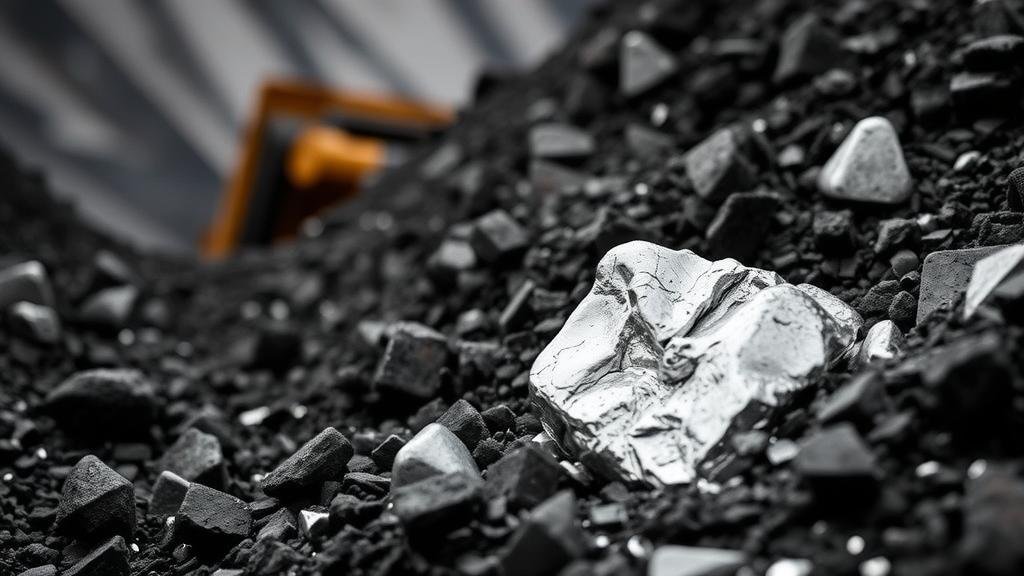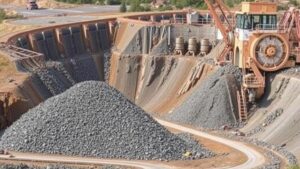Recovering Silver From Low-Yield Mining Dumps Using Affordable Methods
Recovering Silver From Low-Yield Mining Dumps Using Affordable Methods
The mining industry has long been a vital source of precious metals, including silver. But, the increasing demand for environmentally sustainable practices has prompted researchers and miners alike to explore innovative methods for recovering silver, especially from low-yield mining dumps. This article delves into the strategies for effectively recovering silver using affordable methods, offering insights into both chemical and physical processes.
Understanding Low-Yield Mining Dumps
Low-yield mining dumps primarily consist of tailings, which are the by-products of the ore extraction process. e deposits can contain significant amounts of silver, often left behind due to cost constraints during traditional mining operations. For example, a study from the University of Nevada revealed that tailings from old mines contained close to 40 grams per ton of silver, which presents an opportunity for recovery that is economically viable when utilizing cost-effective methods.
Affordable Methods for Silver Recovery
Various methods exist for recovering silver from these dumps. The following sections outline some of the most cost-effective techniques currently employed in the mining industry.
Chemical Leaching
Chemical leaching has gained popularity for its ability to dissolve metal ions from solid ores using chemical agents. Notably, cyanide leaching is a common method; however, it involves significant environmental risks and regulatory issues. Alternatives such as thiourea or bioleaching with microorganisms have emerged as safer and more affordable options.
- Thiourea Leaching: Thiourea has shown promising results in recovering silver. A study by the International Journal of Mineral Processing demonstrated that this method could achieve extraction rates exceeding 98% under optimized conditions.
- Bioleaching: Employing certain bacteria, such as Acidithiobacillus ferrooxidans, can help mobilize silver from ores at a lower environmental cost, making it a feasible option for low-yield dumps.
Physical Methods
Physical methods can also effectively recover silver from mining dumps without reliance on hazardous chemicals. Techniques such as gravity concentration and flotation are commonly employed.
- Gravity Separation: This method takes advantage of the differences in specific gravity between the silver-containing particles and waste material. Equipment such as shaking tables and jigs can concentrate silver effectively at relatively low costs.
- Flotation: The flotation process involves adding chemicals to create hydrophobicity in silver-containing particles, allowing them to be separated from waste. A case study by the Mining Engineering Society found that the flotation method resulted in recoveries of silver as high as 85% in certain low-yield deposits.
Innovative Approaches
Several innovative techniques for silver recovery have emerged, combining traditional methods with advanced technologies. e include:
- Using Nanotechnology: Recent experiments have shown that nanoparticles can enhance the catalytic activity of leaching agents, significantly increasing silver extraction rates.
- Hydrometallurgical Techniques: Hybrid approaches utilizing both leaching and advanced filtration systems allow for increased purity of extracted silver, reducing further processing costs.
Environmental Considerations
The recovery of silver from low-yield mining dumps must be balanced with environmental sustainability. Use of non-toxic and biodegradable agents, such as those employed in bioleaching, minimizes ecological impact. Plus, implementing efficient water-management practices during the recovery process is essential to prevent contamination and ensure compliance with environmental regulations.
Conclusion and Actionable Takeaways
Recovering silver from low-yield mining dumps presents significant economic opportunities, particularly through affordable and sustainable methods. Copper and silver recoveries from conventional and innovative approaches illustrate the potential of these techniques. Mining companies aiming to improve profitability while reducing environmental impacts should consider the following action steps:
- Conduct comprehensive analyses of existing tailings to assess silver content and recovery potential.
- Invest in research and development for alternative recovery methods that prioritize environmental safety.
- Use state-of-the-art technologies to optimize recovery processes and enhance cost-effectiveness.
To wrap up, the responsible extraction of silver from low-yield mining dumps is not only feasible but also essential for advancing minings role in sustainable development.


